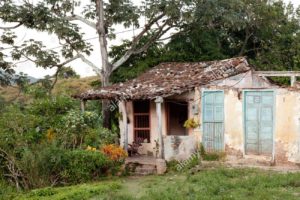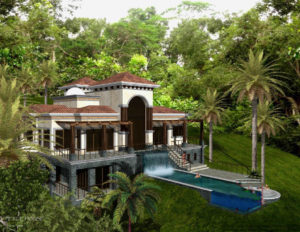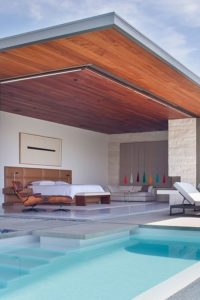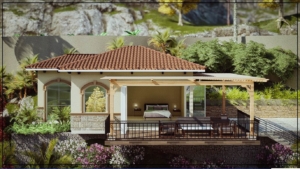Costa Rica Home Builders | Build a House | Custom Homes
/in Articles About Building, Building a House /by Michael PechbrennerChoosing a Costa Rica Home Builders Class
Finding reputable Costa Rica home builders is paramount to the success of your project. Knowing what questions to ask and how to check the viability of the builder.
Above all to how to know their competence of construction methods.
A builder’s personal stability will ensure building stability. Even more, a General Contractors’ license is available in Costa Rica but is not mandatory.
Consequently, a licensed builder is more apt to provide you with quality as he will be compelled to government warrantees administered by the CFIA.
Depending on the type of home you’re building, there are different levels of construction value, which will determine the level of construction expertise you will require.
To explain, the more complicated your Costa Rica real estate homes for sale design. Then the more qualified your Costa Rica home builders should be.
Likewise to hire an over-qualified builder to build a ‘tico style’ home. Contrarily could be more expensive than what you really should be paying.
The following article will break down these construction values. Which will guide you to a process of builder selection. In addition, the article Building A House in Costa Rica will help you hire a builder. Once you have identified the class you require.
The categories for your understanding are:
- Two-Faced Builder
- Tico Style Home
- North American Style Home
- Smart Home Technologies
- Vertical Builds Mountain Homes
You should note that no one has left school with the title ‘Builder’. Whereas all builders began as a tradesman and advanced into the building. As a result of their ability to facilitate the trades to complete the project. Included with years of experience.
Furthermore, the builder becomes familiar with the trade processes. Which he can quickly recognize a fault with the material. Or perhaps a poor installation is being performed.
Which he can rectify before it becomes a disaster and expensive to fix. Therefore, experienced Costa Rica home builders should be your first choice in all categories.
Another option not mentioned in this article:
It would also be note worthy to understand that a Architecture Firm and/or a General Contractor is a level above a builder. Meaning an Architecture firms which have full staff and General Contractors have full time crews and equipment. Both of these companies offer services and stability above a single bulder. Which should be considered in your home designing and home building.
There are several ways of finding qualified Costa Rica home builders. Firstly recommendations are always a good source. However, you should know the person making the recommendation.
Often the one making a recommendation is a friend, family, agent, who is posing as a client of the builder. I have seen blogs where it appears the builder is answering questions. While in reality it is staged, scripted and it is all theatrics. Therefore, qualify who is making the recommendation. Hold reservations when reading dialogue on Facebook.
Two-Faced Builder:
Finding someone who claims to be a Costa Rica home builders. However in reality their main business is not associated with building.
Perhaps they own a hotel or restaurant as a primary business. This has higher risk factors that require a little more due diligence.
This type of builder does have stability and is rooted. Although as a hotel owner and not the area of expertise you require. Similarly, would you hire a dentist to fix your car? If you are considering this ‘class’ of the builder.
You will want to ask:
- Is he actually a builder or a facilitator?
- Does he have a regular crew or does he take who is available at the moment?
- Does he have tools?
- Is he a legal entity with government responsibilities?
- Does he have insurance and report payroll?
- Does he have warranties on products and labor?
If any of your answers are ‘no’ to any of these questions. Then you need to ask yourself what cost can reflect back on you. Could it involve fines with the ministry of labor? Perhaps a lawsuit from someone who was hurt on the site?
Criminal problems back on you from Hacienda for payroll withholding taxes? Could it break an established friendship between you and the restaurant owner? Will he need a dentist after your done with him? Read my article Building a House in Costa Rica for hiring advice.
Tico Style Homes:
This style of home is referring to a basic house structure. The term “Tico Style” is in no way meant as a condescending adjective.
On the contrary, this is the most economical way of homeownership. Furthermore, Tico style homes have many natural attributes, which I mention in my post Designing Your Cool House (coming soon) to keep the house cool.
In addition, there are ‘Tico Style’ prefab home designs. Which are available at your local building supply store. These houses are not labor-intensive and can be completed in 6 to 8 weeks. Also works great if you’re wanting to construct cabanas or rental properties.
These styles of homes don’t provide comfort, aesthetics, or curb appeal. Meaning they provide shelter, bathroom facilities, no cabinetry. Commonly kitchens are usually concrete top with wood shelves and no doors.
As a result, these homes are very simple, very basic. Which don’t include insect or mold deterrents. Nor insulation values and no acoustic values. Furthermore no ambient values and often generic and economical materials. Including flooring, windows, plumbing and electrical fixtures, etc.
Tico Style House Attributes
I have seen some of these homes finished off pretty nicely. Which may include window moldings, rafter tails, and other finishing accents. In addition, they generally have large eaves for shade and covered front porch areas.
Which provides shading on the house for natural cooling. Furthermore, stucco finishes give pleasing colors.
Because these homes have great cross ventilation. Together with an open attic area allowing breezes to pass through. Your best option for cooling comfort is a fan.
These homes can be 50% concrete and 50% wood. Or 100% concrete. These homes can be secure, and safe.
Recommended Costa Rica Home Builders:
The recommended builder for this type of home is to simply hire a Maestro de Obras, which is a foreman of construction. Of course, every construction worker in Costa Rica is familiar with tico-style housing. When choosing a Maestro de Obras, you will want to confirm he is a working Maestro de Obras. Unlike just a technical adviser as many consider themselves. Meaning he needs to be working with the crew with a tool in his hand.
Furthermore, Maestro de Obras will be knowledgeable in all aspects of the construction. Therefore you should have a few test questions. Particularly regarding electrical and plumbing. To explain, electrical and mechanical installations are consistent. Whether or not tico-style home or mansion home. Therefore, you want to make sure your mechanicals will function correctly.
Setting Up Administration
You will still need to administrate the purchase of materials, as well as the scheduling of deliveries. In addition, you will want quality control over materials. Also to make security provisions to guard against theft. Furthermore, you will want to coordinate bi-weekly payroll.
Most banks have payroll services. Moreover, this will keep you legal. Although Nicaraguans don’t have work visa’s you can still register their passports. For the reason that they will receive CCSS and INS coverage. Most importantly to stay legal and don’t bypass this responsibility.
If your out of the country and cannot perform these administrative duties, alternatively you can sub this out to someone you trust. Commonly architects often will be the technical administrator for materials and labor. For the reasons that they are already visiting the site for weekly inspections.
North American Style Home:
This is a category that most people reading this article will fit into. To clarify that North American-style homes will incorporate engineered systems. Including additional materials to provide us with comfort, and ambiance. Furthermore considerations for aesthetics, security, and insect and mold inhibitors.
Normally, it was recommended to hire a North American builder to construct these homes. However, I have met tico builders with equal qualifications Which present knowledge, and honesty towards successful project completion. Unfortunately, the language barrier has been a deciding factor for many owners. Although this is a shame as many great tico builders are capable.
Recommended Costa Rica Home Builders:
This builder should demonstrate stability, as well as he should own tools of construction and precision, together with the knowledge of the mechanics of products.
In addition to having experienced crew (prefer permanent crew). Most importantly to have a General Contractors Carnet with CFIA, and be bi-lingual.
Finding a builder that holds all these characteristics can be difficult. Although they do exist. Which many of these qualified builders and general contractors.
The fact that likely they are exclusive builders to a development. Therefore more difficult to find as these builders have little advertising and a weak web presence.
Prepare a list of questions to interview your builder. For the reasons to recognize his knowledge and expertise. In addition, expand your boundaries for a qualified builder.
As a matter of fact, General Contractors are credited with projects throughout the country. After all the objective is to hire a qualified administer to complete your project. You may find the article Method of Building A House in Costa Rica.
Where to begin
The ideal situation here is, to begin with, an Architecture Firm. To simplify a contract with them for a complete package. To clarify this will prevent any miscommunication. In the event, if you have not committed to a home design. While you are at the beginning stages to prepare and support your expectations. So we invite you to read the series of articles in an orderly listed below.
If you do have your designs and you are looking for qualified builders, then I would refer you to hiring advice at Building a house in Costa Rica, and First Method of Building a House in Costa Rica, and Second Method of Building A House in Costa Rica. In general, these articles should give you sufficient direction. Furthermore the tools for interviewing and document control.
You are the boss of your project. Moreover the builder works for you. To emphasize that you are the facilitor with an objective. Therefore, you are hiring his technical ability and management experience to facilitate your project. Specifically under your supervision and approvals.
Facilitate responsibility
You may choose to have control over your material purchases. Therefore you require to hire the builder strictly for labor costs. In addition, you may have your own purchasing agent, who will scout out the best material purchasing prices.
Therefore, you only need to hire a qualified crew for installation. Although this may be true this is very uncommon of course. To clarify my point is that you may structure your build. Perhaps to utilize your expertise and hire out the other phases.
Key points
- How much experience this builder has in Costa Rica? How do I benefit from this?
- What were these builders’ trade before becoming a builder? How do I benefit from this?
- What warranties, guarantees, does he offer? How do I benefit from this?
- Does he offer financing or attributes? How do I benefit from this?
- Is the builder structured to save me money? How do I benefit from this?
- What makes this builder unique from other builders? How do I benefit from this?
- What is this builder’s price compared to other builders? How do I benefit from this?
Smart Home Technologies:
This is growing in popularity quickly. Which does have a great presence in Costa Rica. Uniquely this is a competitive field. Whereas manufacturers such as Google and Apple are producing smart home technologies. Which you can control your home’s functions by your phone device.
These technologies for your home could include;
- Wireless light switches
- Motion sensory
- Infrared sensory
- Automation receptacles
- Security systems
- Climate control systems
- Intercom and other communications throughout the home
Receiving the communications from these systems through RF (radio frequency) or IF (infrared signal). Most commonly through wifi. Where a smartphone, tablet, or computer provides interface controlling. Specifically towards controlling air conditioning, lighting, cameras. Possibly electrical backup redundancies such as solar systems.
Smart home technologies provide you with the ability to turn on lights. Including unlocking the door for the maid, or feed the cat. Furthermore water the grass, and clean the pool. Specifically performed remotely from locations anywhere in the world with internet connectivity. In addition to starting the car to keep the battery charged. This list continues to almost infinite.
Recommended Costa Rica Home Builders:
It would be beneficial if your builder has a background and knowledge in telecommunications. For the reason that outfitting your home with smart technologies. Specifically requires a working knowledge of telecommunications.
Which include the installations of wireless networking systems. Also, UPS backup systems, and low voltage manifold installations. Thereupon knowledge of communication wiring usually with cat-6.
As well as knowledge of wireless systems similar to mesh internet installations. Additionally backup systems for data and security. Perhaps solar system technology for off-grid calculations.
Choosing this builder is the same as choosing a North American Style Homebuilder. However, your test questions should revolve around technology as well as structure. Equally important that provisions should be included in the design for future additions.
To clarify this technology advances with new gadgets constantly. Therefore your builder should have some experience with importing products. For reasons that many of your systems will most likely come from outside the country.
Builder and Designer liason
Not only your builder but your designer as well, including your electrical engineer. Should have a working knowledge of smart home technologies. In addition to standard home wiring designs smart home system designs differs tremendously. Therefore, smart home technology designers and builders should be sourced.
If you’re deciding to go with a smart home design and build. Then it is most likely you have a general idea of the systems you would be interested in. This is truly a project for Method of building a house in Costa Rica, and Costa Rica General Contractors.
Vertical Builds, Mountain Homes:
Often mountain real estate properties have steep grades. Which include slopes from front to back or back to front or side to side. Most likely your designer will be very creative.
In order to use the natural topography. Additionally, they will have provisions for stormwater management. Together with utilizing creative structural engineering of cantilevers, and anchoring systems.
Your designer will create lot access for a place to park a car. Perhaps this may be the only area of ground manipulation. Whereas the house design may ‘spill’ off the mountain. Which incorporates engineering ingenuity. From the results of weight dispatches, fasteners available, lightweight materials, and flexibility. While collectively staying focused on focal points, privacy issues, sun travel, and all attributes towards home designing.
A builder’s responsibility to constructing a home. Although he only needs to follow the blueprint specs. Often there are on-site decisions to be made. Whereas your builder should have a good understanding of engineer. Especially when it comes to engineered systems, cantilever, and fasteners.
Recommended Costa Rica Home Builders:
In addition to your builder, it would be advisable to have a structural engineer. Specifically registered as the responsible for weekly inspections.
Knowingly two heads are better than one. Which designing the very ‘bones’ of the structure. Together with the installation of complex engineered systems. Most importantly, this discussion is in regards to safety. Therefore, it is paramount to govern your project correctly upfront.
Although this may sound a bit shallow. Notwithstanding my experience when I have built mountain homes.
Accordingly, I have had better success. As well as better home advancement. When I assign a crew of good physical condition.
In light of a typical workday where there are verticle climbs and descents. Together with carrying heavy articles. Therefore, having a physically fit crew will keep a moderate pace of advancement.
A common issue on mountain builds is where to store materials. Often, we have had to move the living bodega several times as the home advances. Your builder should be a good thinker with much foresight for project advancement, material delivery, material unloading, and storage.
Alternative to a single builder
For a better chance of success, it would be advisable to have a team of designers and builders. For this reason, it will save you an abundance of money and headaches. Also, you may read Costa Rica General Contractors and Costa Rica Architecture Firms.
Calculating the weight of the house design will help calculate the delivery costs. As often materials need to be transferred to a smaller vehicle to manage the mountain road grades and corners.
Therefore, the owner should be open-minded to material choices. For example, a solid block concrete home will have much weight. Which will require a heavy anchoring system.
As well as contribute to several thousands of dollars on the foundation cost. Together with several thousands of dollars on material deliveries.
The photo I have here is a house design called ‘Casa Sorento’. Specifically designed for mountain construction. The design includes a solid concrete construction on the mountain surface.
Transitioning to a lightweight material of steel and glass. Ideal for cantilever design which only requires lightweight anchoring. At the same time will require fewer deliveries.
As well as lighter material therefore more material per delivery. Notwithstanding a proficient advancement. Equally both ways you save money with a superior result. The result is a beautiful home with a low cost to build. Contact us for more info
A builder of this type of home will require a working knowledge of:
- Masonry construction
- Red steel construction (Costa Rica calls it black steel).
- Engineered tensioner sway bars
- Cantilever engineering
- Tempered glass theory and installation
- Quite possible pressure reduction valves
These types of builds can be complexed and technical. Therefore you will want a builder who came from the top of his class. Consequently, this may cost a few dollars extra. Make your decision wisely.
Feel free to contact me if you wish for any further information on this type of build. As well as furnishings
Following our series of building articles (in order) will empower you towards the success of the completion of your project:
- How to Hire a Builder
- Costa Rica Architect Firm
- Designing A House In Costa Rica Attributes
- Home Designing Service Costa Rica
- Costa Rica Home Builders (this article)
- Methods Of Building In Costa Rica
- Costa Rica Custom Home
- Costa Rica General Contractor
- Interior Design In Costa Rica
- Finish Touch Furniture SRL














 I don’t subscribe to engineered wall systems, as, I have yet to see a system more superior than what we are using in our designs. Our methods have been taught for generations.
I don’t subscribe to engineered wall systems, as, I have yet to see a system more superior than what we are using in our designs. Our methods have been taught for generations.






 Knowledge is to understand and understanding gives you power and confidence. Similarly, your personal skills are compared with your competitor’s skills. You will recognize, good quality, bad quality, correctly done, incorrectly done. Subsequently, because you are qualified to make those assumptions.
Knowledge is to understand and understanding gives you power and confidence. Similarly, your personal skills are compared with your competitor’s skills. You will recognize, good quality, bad quality, correctly done, incorrectly done. Subsequently, because you are qualified to make those assumptions.